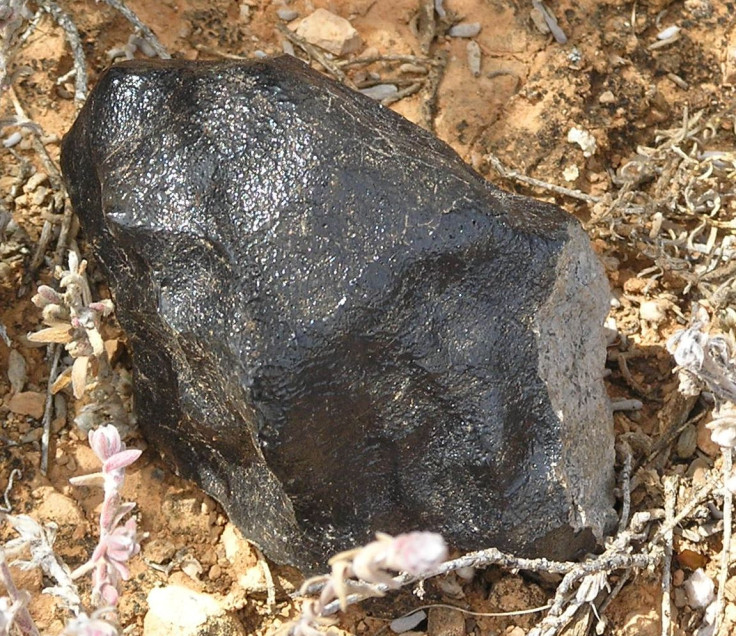Meteorite May Point To A Massive Undiscovered Asteroid Lurking In Solar System

There could be an undiscovered asteroid in the solar system that looks a lot like a planet, according to scientists who found a piece of that mysterious space rock that crashed down onto Earth.
The researchers saw something strange when they did a chemical analysis on that rock, which has been dubbed Bunburra Rockhole and was found in Australia — it doesn’t look like other known asteroids. A study in the journal Geochimica et Cosmochimica Acta says the scientists were comparing it specifically to Vesta, the second-largest object in the asteroid belt between Mars and Jupiter. Although the meteorite and Vesta had similar general makeups, their oxygen compositions were much different.
According to the authors, it could be that this meteorite broke off a massive asteroid that we have yet to find, one that has the potentially to tell us a lot about the solar system’s early history.
The evidence suggests the parent asteroid from which Bunburra Rockhole broke off was differentiated, meaning its parts had settled into layers in the same way a planet does: It became spherical and the heavier elements fell to the center, while the lighter ones remained closer to the surface. It had a crust, mantle and core just like Earth. NASA’s Astrobiology Magazine said the meteorite’s guts reveal this occurred, during a period of extreme heat and melting.
This is important to understanding the dawn of the solar system and how the planets formed because scientists debate how material clumped together in those early days, with some of those clumps turning into planets and others living out eternity as just giant rocks. Unlocking to secrets of the oldest asteroids can help solve that puzzle.
According to the researchers, the Bunburra Rockhole didn’t just come from another part of Vesta that they have not sampled before — all existing evidence suggests that Vesta, another differentiated asteroid, has a homogenous makeup. But its true parent rock probably formed in the same part of the solar system as Vesta.
It’s hard to say where that is, but we do know that before it reached Earth, the meteorite came from a place in the asteroid belt inward from Vesta, according to scientific projections.
This unknown parent could be about 60 miles smaller than Vesta, Astrobiology Magazine estimates.
Vesta’s diameter is about 325 miles.
“All the larger asteroids in the belt and in near Earth space are classified,” researcher Gretchen Benedix told the magazine. “So either there is another big asteroid that we haven’t found yet or the asteroid that Bunburra Rockhole originated from has evolved over time through space weathering and impact processing.”
© Copyright IBTimes 2024. All rights reserved.





















